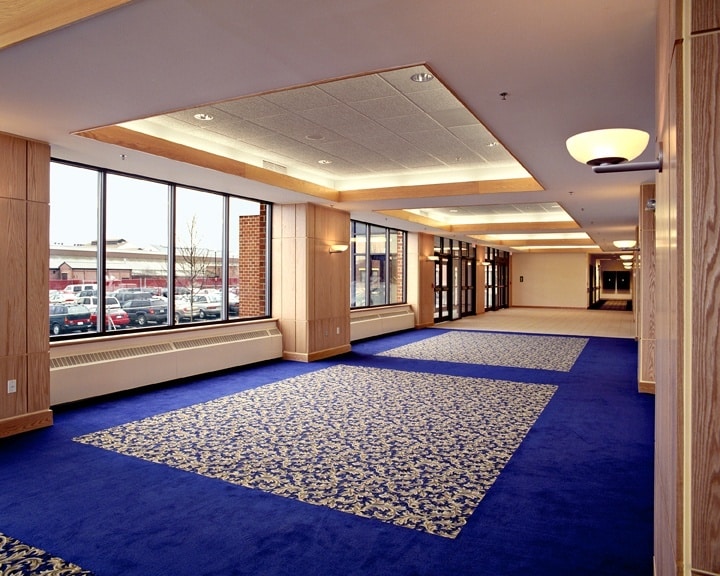Below are seven strategies that you can use to make your older building more sustainable while also complementing and preserving the character and design of the structure.
1. Perform an energy audit
Before installing new equipment or making upgrades to enhance an older building’s sustainability level, owners and facility managers should first perform an energy audit to determine if existing systems are operating at optimum levels.
Leaks, clogged or dirty filters, disabled sensors, faulty or incorrect wiring, or a lack of knowledge on operating and maintaining equipment among the maintenance staff can lead to increased costs and inefficiency. MEP consulting engineers can identify opportunities for improvement in each of these areas, as well as in a building’s water systems, which can waste water and energy if they leak or operate inefficiently.
2. Retrofit windows
Windows play a major part in conveying the overall aesthetic appeal and character of an older building. They were often custom fit, and replacing them with new windows could require changing the size and shape of the opening. The installation of new windows also uses greater amounts of energy and resources, from materials used during production, to fuel used during transportation, to the disposal of old windows.
While all these factors make for a strong reason to keep your old, visually-appealing windows, chances are they aren’t functioning at a very eco-friendly level. Retrofits such as cellular shades, storm windows, and insulating shades can help stop any air leaks and improve a window’s energy performance. Adding weather stripping or caulking to drafty areas around your windows can also be a good first step to increased energy savings.
3. Reduce air leakage
In addition to windows, there are a number of other areas that can be responsible for air seeping into and out of an older building, which increases heating costs in the winter, cooling costs in the summer, and allows damaging moisture to collect inside your building. The tops and bottoms of exterior walls, open cracks at the bases of walls and around windows and doors, recessed lighting fixtures, and the intersection of walls and attics should all be sealed in order to curb air leakage and make your building more energy-efficient.
4. HVAC upgrades
Upgrades to heating, ventilation, and air conditioning systems that include making use of natural ventilation and natural heat sources; minimizing energy losses in conventional systems; integrating new efficient technologies into HVAC operations, and many other methods all help to make HVAC systems more proficient.
There are a number of ways that buildings can achieve greater HVAC efficiency, from upgrading to thermal storage or free cooling systems to utilizing sensors and automating HVAC operations in order to function at optimal levels.
Installing HVAC ductwork in older buildings can require some thoughtful routing, configuring, and concealing to maintain the building’s aesthetics, meet code requirements and comfort standards. Fan coil units are often used to replace radiators in historic buildings because the pipes are smaller and less intrusive than forced air systems. Vertical-routed ductwork is also an option for preserving vaulted ceilings where little or no space is available above the ceiling.
In any instance, the design process should give careful consideration and planning to installing equipment in areas that will be hidden from view and/or effectively complement the theme and aesthetics of the building.5. Increase insulation
Reducing heat transfer through a roof or attic space is a very effective approach to reducing energy consumption. Heat loss and gain caused by differentials in interior and exterior temperatures is greatest at the top of a building and can be more pronounced in older buildings that may need some structural upgrades to go with fresh insulation. Adding insulation to unfinished attic spaces will not only provide energy savings but is also generally easy to install and causes minimal disruption to a building’s historic features.
If your basement is part of your building’s thermal envelope—it receives hot and cold air from your HVAC system—insulating floors, walls and vents will help to reduce energy use and manage moisture. If the basement is outside of your building’s thermal envelope, insulating between the floor joists on the underside of the subfloor is generally recommended.
Wall insulation throughout your building can improve its thermal efficiency, but could cause damage to historic features and designs. Installing blown-in insulation into wall cavities causes the least amount of damage to historic features, but this option should only be pursued after roofs and basements are sufficiently insulated and an analysis is conducted to make sure wall insulation would be cost-effective.
6. Upgrade equipment and appliances
In addition to upgrading HVAC system components, building owners and managers can recognize greater levels of energy efficiency and cost savings by upgrading other equipment, such as water heaters. High-efficiency water heaters use far less energy than older models, and other types such a solar-powered or tankless water heaters can offer even more significant savings.
If your building has older refrigerators, dishwashers, washing machines, or other appliances, upgrading these to newer, more energy-efficient models will reduce electricity use and lessen indoor heating and cooling loads.
7. Utilize renewable energy
With solar and geothermal energy, owners and managers of older buildings can add environmentally friendly and cost-effective energy sources that require minimal aesthetic and structural alterations. These strategies should be implemented only after other upgrades have been implemented and a thorough analysis determines their cost-effectiveness.
Solar panels can be installed in places with limited or no visibility, such as on a flat roof at a low angle or on a secondary roof slope. Solar collectors can be used to heat water and photovoltaic panels can convert solar radiation into electricity.
Geothermal systems require less equipment space, have fewer moving parts, and maintain better internal humidity levels than standard HVAC systems. By using the earth’s heat as its source, a geothermal system can reduce a building’s emissions and energy consumption while providing quieter operations and greater long-term savings than conventional HVAC systems.

Recent Comments